Words by Manni Goldbeck & Ron Swilling; photos by Lambert Heil
Earlier in the year we had the pleasure of exploring the South with a camera in hand and a pen and paper in reach. Last month we had the opportunity to continue meeting Namibia’s colourful people, this time in the East.
Early in the morning, in the Okeruru village in Aminuis, we came across Philadelphia (Kumbee) Tjikuzu resplendent in her turquoise blue traditional Herero dress. ‘Ek gaan dorp toe’ (I’m going to town), she told us. Before she went on her way she happily posed for a few photographs with her neighbour, Alexander (Jozikee) Kahuva.
While in the area, we paid a visit to the construction site of the Chief Hosea Kutako Memorial Museum and Homestead Shrine, honouring the great Herero leader. We were immediately impressed at how the museum had been designed to incorporate the chief’s original homestead, the holy fire and the large tree underneath which many meetings had been held over the years. The museum was built not only to commemorate the past but to provide a working space for many future meetings and a home for the OvaHerero’s present spiritual leader Absai Uetuesapi Mungendje, linking the old with the new, yesterday with today. We were privileged to be allowed an audience before being sucked back into the sweltering day.
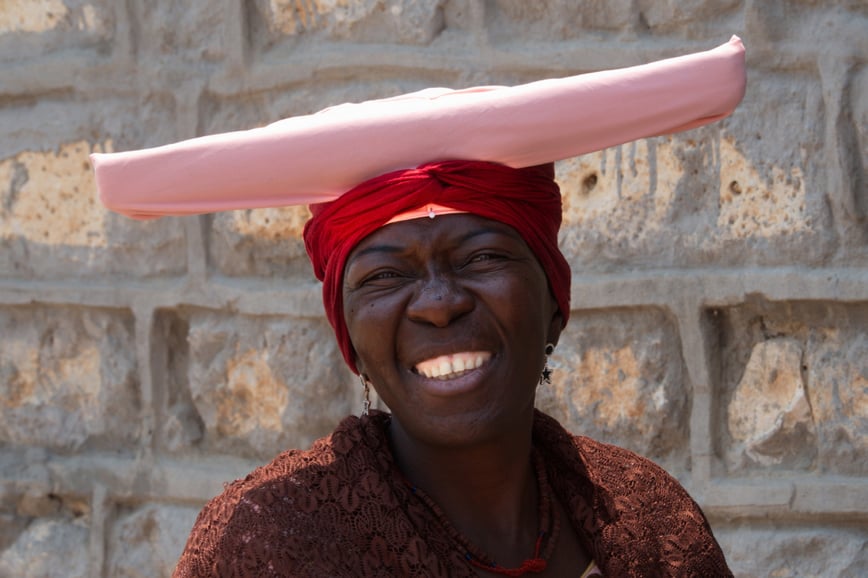

An old stone house with thick walls caught our attention and the Tjanbero family came outdoors to chat to us. They told us that that it was once a German school house, owned by a Mr Fischer, before becoming a cool family home.
When we spotted the Cowboy Barber Shop, we had to make a turn to meet its owner, Collin Kautjituavi, and we weren’t disappointed. The song ‘I can see clearly now, the rain has gone’ was playing softly on his music system inside the shop and the inspiring words and gentle melody wafted out the door. Collin who likes ‘all things cowboy’ went to school in Stampriet, but returned to his hometown to open his barber shop. His friendliness, relaxed manner and cowboy style won us over and we left humming the popular tune.
As the temperature soared, the cattle outside the Protestant Unity Church had the right idea and lay in the shade of a tree. The women’s striking Herero dresses continued to rule the day, adding a bright and regal beauty. Milka Kahiiko looked like an African queen as she waited outside a small shop that was emblazoned with advertisements for MTC. The colour of her dress perfectly matched the MTC shade of blue.

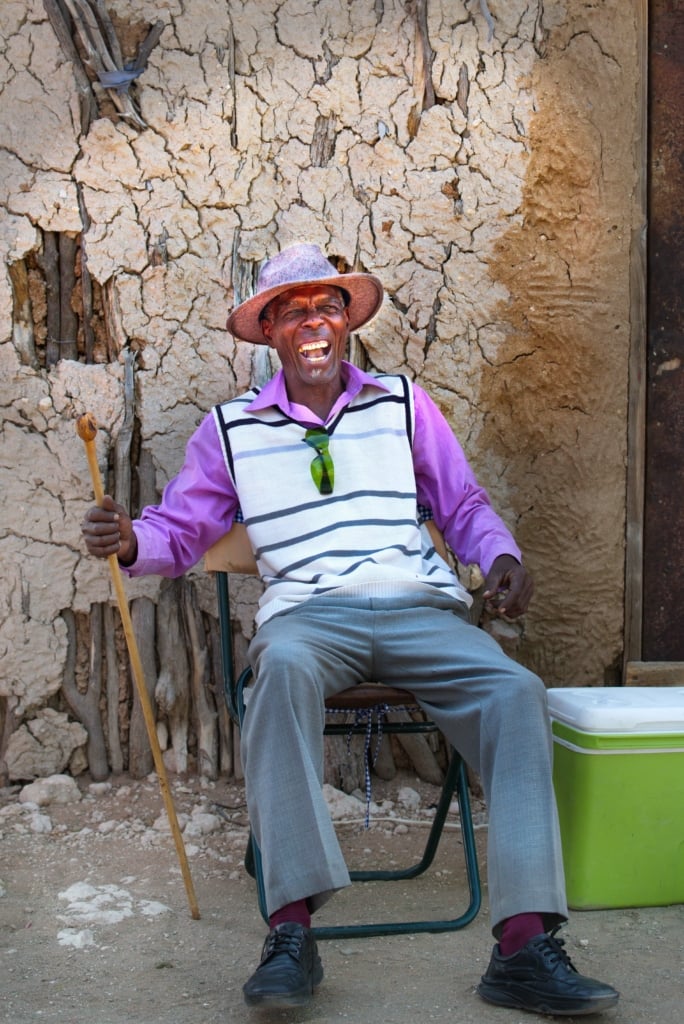
Colour and a very neat yard drew us into the pink-and-green home of Jessica Ndjizera’s family. Jessy studied in Windhoek to become a pharmacist before returning home. The villagers know to knock on her door when in need of a remedy.
A burst of energy came our way soon afterwards. This time it wasn’t in the form of a dust devil, but a group of slim, attractive high school girls from the Rietquelle High School in Aminuis. As I entered the homestead, they stopped me at the gate. “When you enter a Herero homestead you have to taste the soil. It’s a Herero tradition,” they exclaimed. I wasn’t sure if they were pulling my leg or if it was in fact a tradition, but touched my finger to the soil and to my mouth in respect of the good earth. The girls who had just finished their grade 11 exams were brimming with enthusiasm and happiness, filled with dreams of the future.
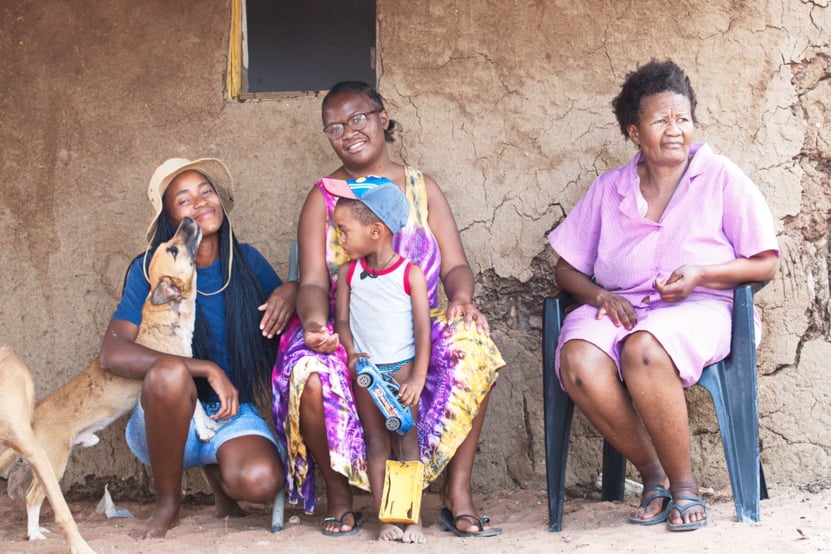
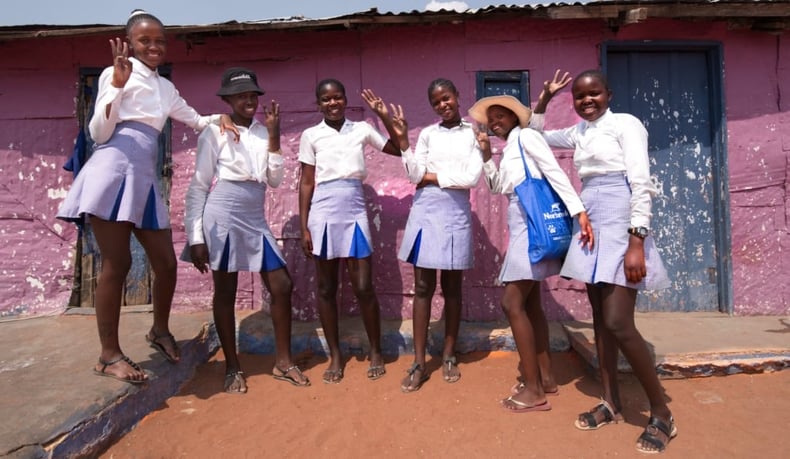
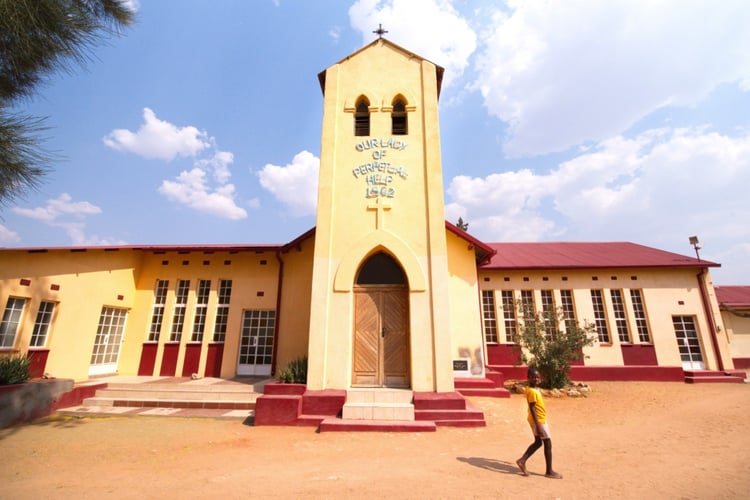
It was with gratitude that we sat in the shade a large prosopis tree to eat lunch next to the 1902 Church of Our Lady of Perpetual Help. She had arrived just in time.
Before we started to make our way southwards to reach our overnight stop before nightfall, we were delighted to meet the friendly Mokhatu family, of Tswana descent, and learned that the Tswana are the smallest ethnic group in Namibia with less than 10 000 people. Ouma Tshire was born in the village. “It’s my ‘homeplek’,” she said, and while she sat on the stoep, daughter Netté, granddaughter Doreen and great-grandson Thusi (and dogs Rangkels and Tau) walked with us to the property below to show us their grandfather’s old Chevy Fleetmaster. Its elegant body now serves as a backdrop for wedding photographs. As we waved goodbye, they called to us: ‘Kea Lebogo’, the Setswana words for ‘Thank you’.

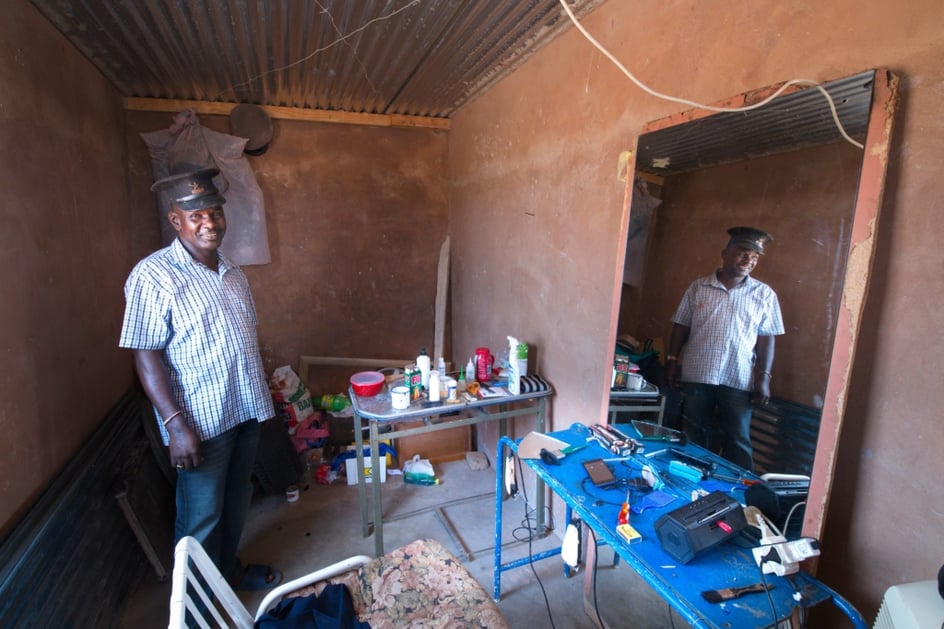
We were still smiling from our day as the sun started its descent in the sky bathing the countryside in gold, the last addition to our palette on our colourful journey to the East.


.png)
.jpg)
.jpg)


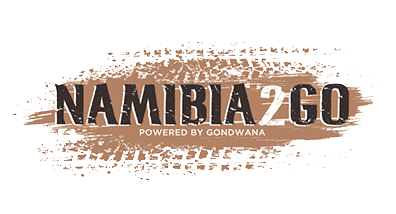

.png)

SUBMIT YOUR COMMENT